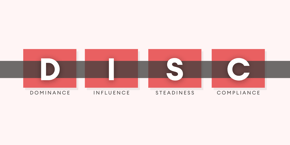The healthcare industry has evolved faster in the last few months than it has over the past 30 years. From embracing new forms of patient engagement and care delivery to the structure of supply chains, everything has changed, so what does the future look like?
An unprecedented surge in demand.
The coronavirus may have been the catalyst the healthcare industry needed. As social distancing has become mandatory, services like telehealth, virtual visits, and concierge care are now the channels through which many medical professionals engage with patients. With social distancing likely to continue for several months, this will be the first in many changes to medical care that will become routine.
Equally relevant to the healthcare sector has been the need for better-managed supply chains of medical consumables. However, it’s not just the obvious PPE (Personal Protective Equipment) such as gloves, gowns, and masks that have had supply challenges. Many consumable product lines, ranging from syringes, needles, sutures, IV tubing, catheters, and cleaning products have seen demand increase. The reliance on reliable supply chains was brought into focus as the disease epicenter moved around the globe. Countries affected badly, such as the U.S., the U.K., China, and Italy, all experienced high utilization of medical consumables, disruption to the supply chains, and subsequent pressure on the ability to deliver care.
As far back as February, the World Health Organization (WHO) warned that global demand for consumables for medical providers was 100 times higher than normal; consequently, prices were 20 times higher, stockpiles were depleted and there was a four-to-six-month backlog. Only now are those demands beginning to be addressed in the worst affected countries.
Fluctuation in demand has also presented challenges. Ventilators, or lack of them, was a major concern as the virus began to take hold. However, as countries have moved through the curve this need hasn’t materialized as predicted and there is now a surplus in supply. Good news for the population, but a challenge for businesses that pivoted so swiftly to meet the need.
Where are the opportunities right now?
While some sectors have seen almost universal shutdowns, medical and healthcare will continue to be at the center of the recovery. For some businesses, it might now be the time to change.
The crisis provides a unique opportunity for manufacturers and distributors to rethink several parts of their business. How and where to manufacture their products. Where to source products and materials. What product lines are now more important and lucrative? This could be a perfect opportunity for domestic distributors in the U.S. and the U.K. to strengthen their domestic supply chain to reduce dependence on imports and guarantee supply for customers.
While the virus exposed nations to the shortage of PPE, new entrants to the sector are seizing the opportunity. Face masks designed by Apple, and Burberry tailored PPE may be two high-profile examples, but there are numerous opportunities and requirements to be taken advantage of if organizations can move quickly to meet the needs.
Understanding the market.
With cross-industry experience and knowledge, sales-i can support the medical sector in meeting the transformative challenges it now faces. By using sales-i, new purchase patterns can be understood, complementary product lines can be identified, and customer demand can be acted on. Alongside these key benefits, insights are delivered overnight, direct to the device of the salesperson. This immediacy of access to sales data will be vital when piecing together insights into how your customers are dealing with the recovery. You can then spend more time talking to your customers rather than reading through spreadsheets.
Like most of everyday life, the medical and healthcare sector will change following COVID, much of it for the better regarding patient access to medical staff and communication channels. But the realization and the need for supply chains to have a reliable, domestic focus could be one of the biggest changes. Learn why you should implement sales enablement & CRM solutions in a medical supply business.



